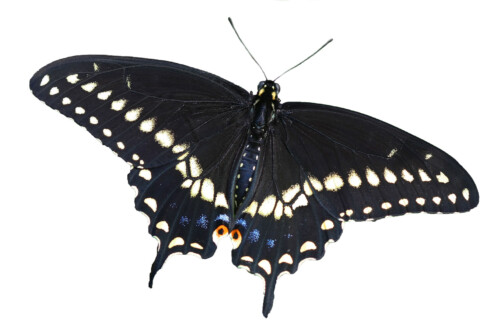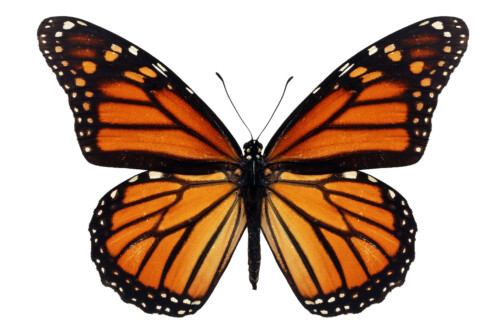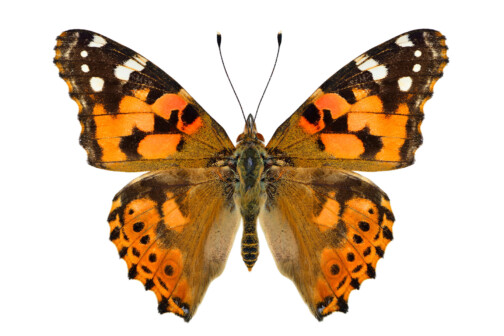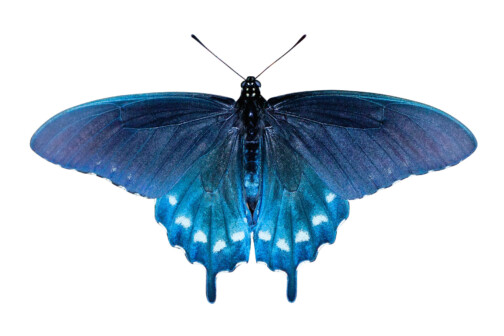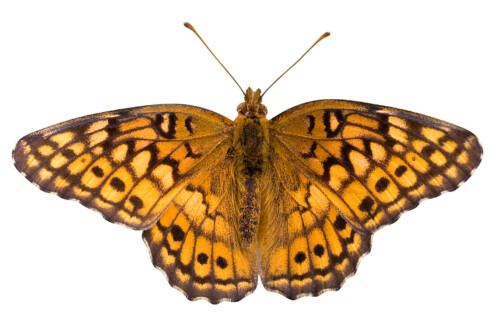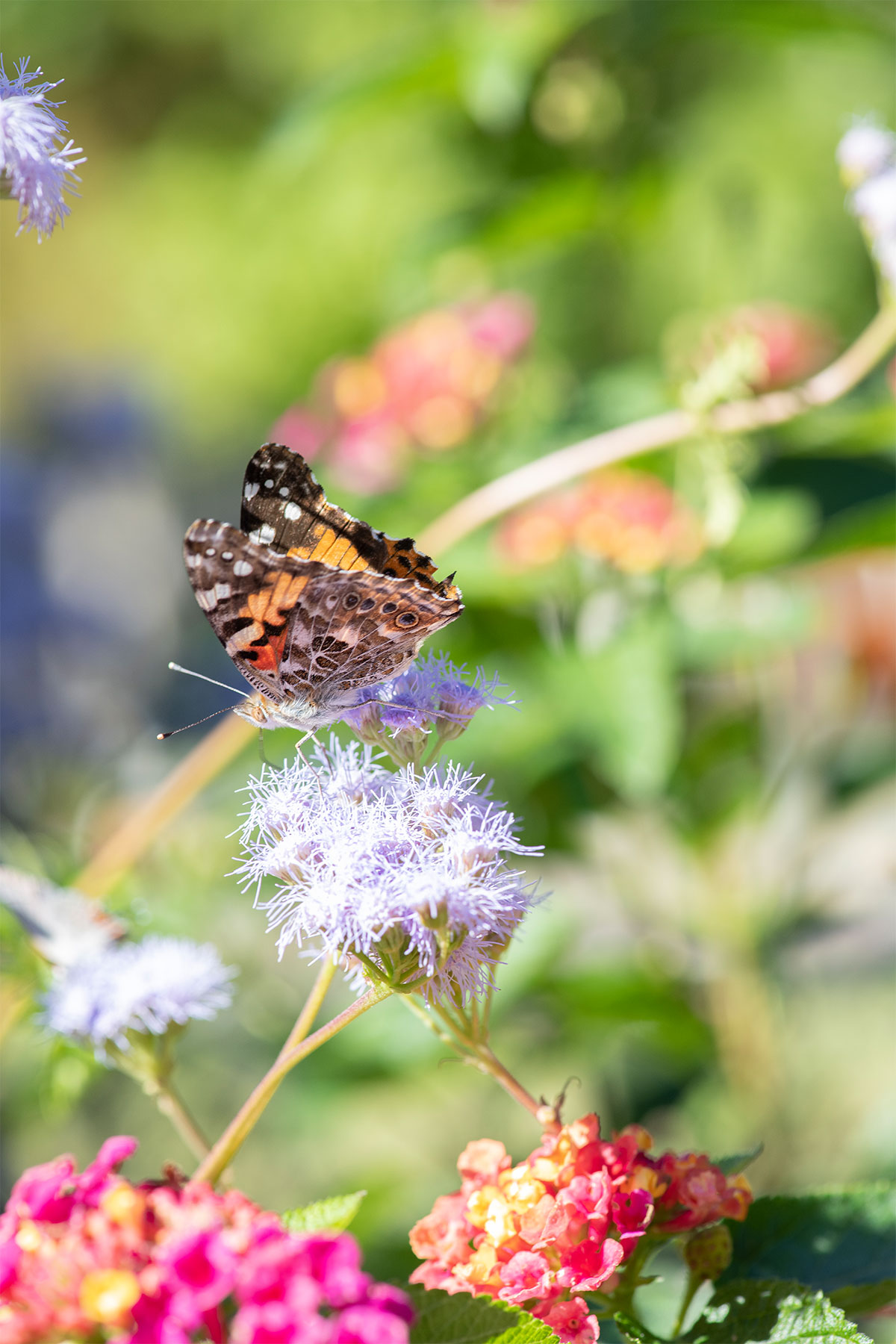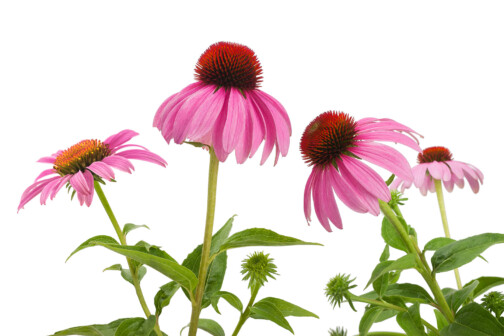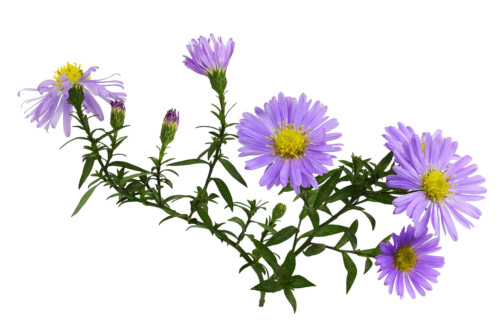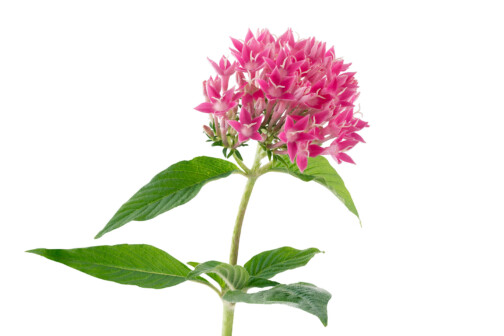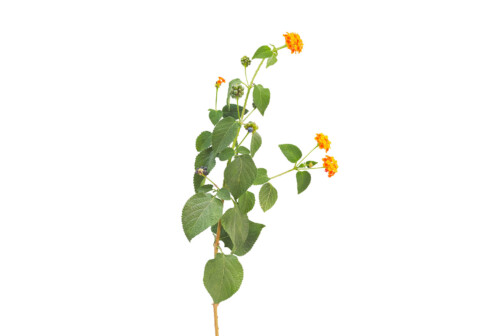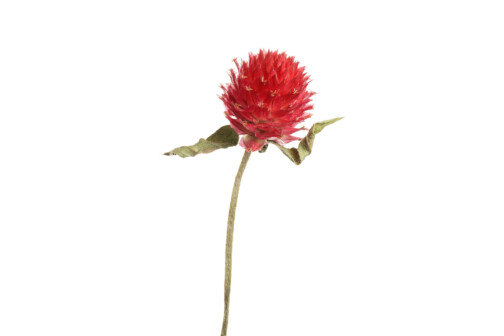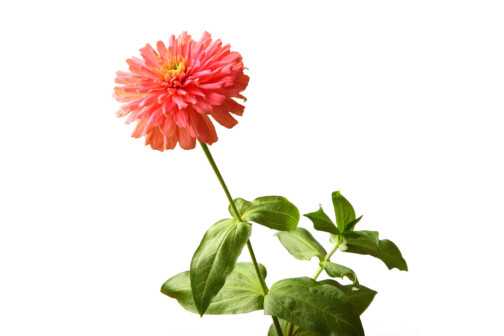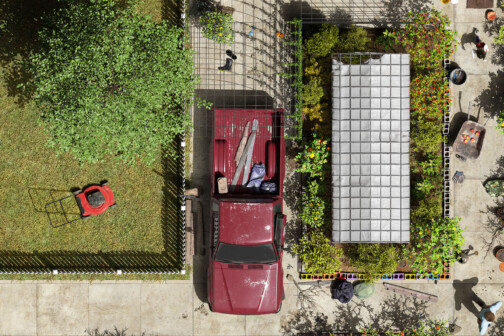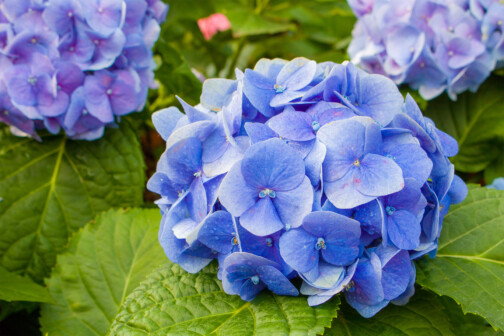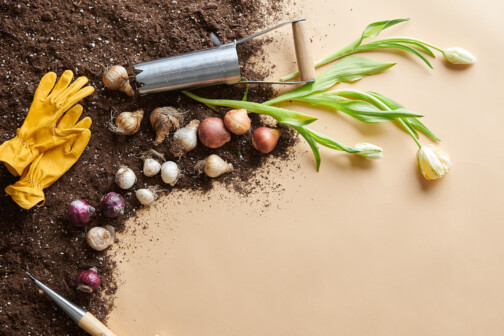It’s 11 a.m. on a mid-September morning, and Amy Genender meets me in the front yard of her Highland Park home. She wears a hat and sunglasses to shield herself from the blazing sun and offers me water on this unseasonably hot fall day. We’re getting together for a tour of her fall garden in the waning weeks of its existence. Gone are the burgeoning days of spring when her yard bursts to life with endless color.
Instead, her garden has outlasted the long, Texas summer to retain much of its florescence. Brightly colored pentas, lantanas, and salvias remain in bloom. A fluttering white skipper butterfly hovers for a second and then perches on a nearby flower. “She’s just stopping in to say hello,” Genender says with a smile.
We head around the side of Genender’s house to her east-facing garden. The space is ideal because the plants receive the cool morning light and are typically shielded from the harshest afternoon rays. I remark at how pristine the flower beds lining her driveway appear. She chuckles and replies, “Tell that to my husband. Whenever he comes home, I’ve dug up more of our lawn and replaced it with more pollinator-friendly plants.”
I notice a small sign that Genender proudly displays in her yard. It conveys that her garden provides resources that increase the population of butterflies as a Monarch Waystation. She tells me that she completed the certification from the North American Butterfly Association, a membership organization that provides butterfly-related educational resources to gardeners across the country.
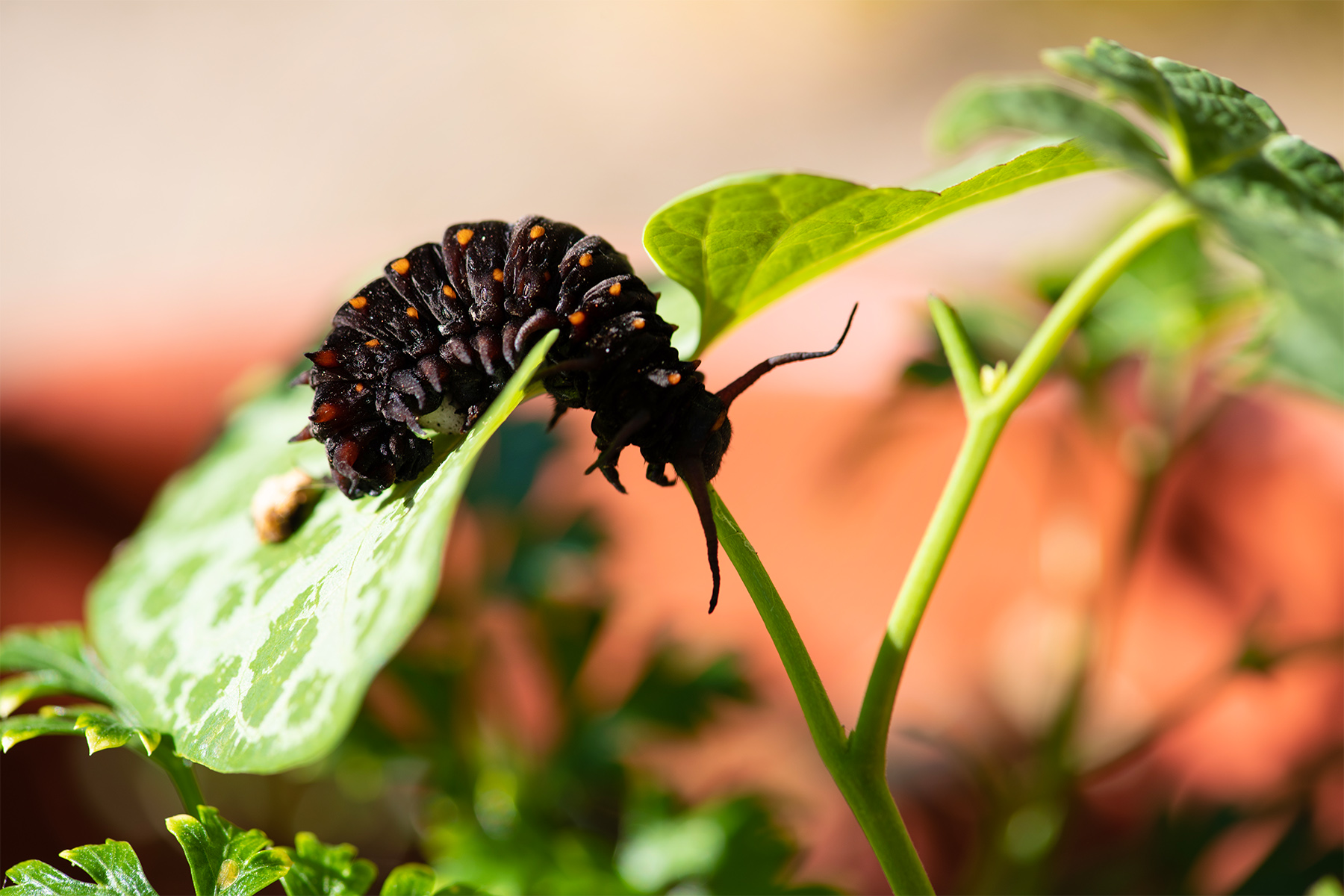
A white SUV pulls up to greet us, and Jennifer Anne Kinder, who is Genender’s neighbor, steps out. She arrives on the scene in time to point out the various native milkweeds, pipe vine, rose mallows, and more that can serve as host plants to help attract butterflies to the garden. Kinder explains that you need a mix of host and nectar plants to create the ideal butterfly habitat. Females are lured to host plants by the chemical cues released from the plant; there they lay eggs, and young, hungry caterpillars can feast. Males are attracted to host plants, too, where they find mates. However, searching out mates and host plants is tiring, so adult butterflies require energy, which they can easily procure from nectar-rich flowers.
Continuing into the backyard of Genender’s home, I’m surprised to find very little grass. Instead, various potted plants, aromatic herbs, and spectacular flowering bushes make for an enchanting retreat. “In Highland Park, sometimes it feels like the more grass you have, the more property and money you have,” Kinder explains. “We’re on a mission to change that perception. St. Augustine isn’t your only option.”
Here are some of the native butterflies that can be found in North Texas—and the host plants that will help attract them to your garden.
Frequent Flyers
About a month before I met with Genender and Kinder, the International Union for Conservation of Nature added the migratory monarch butterfly to its Red List of Threatened Species, meaning the official insect of Texas has now become endangered. While driving to Kinder’s home a few short blocks away to continue the garden tour, she tells me that the average adult butterfly lives only two to four weeks, depending on the species. In addition, a female butterfly can lay up to 400 eggs in its lifetime. Statistically, fewer than eight of those eggs hatch into caterpillars, form a chrysalis, and finally reach adulthood as a fully formed butterfly. Deforestation, urbanization, climate change, and pesticides have also affected the subspecies’ populations. “The best thing you can do to save the monarchs is to make room in your garden for native milkweed,” Kinder says. “If everyone saved a corner of their garden to plant just three milkweed plants, more monarchs would have a place to lay their eggs, and more hungry caterpillars would have a home and food source.”
Genender and Kinder have made it their mission to do what they can to help local butterfly populations. They’ve also nurtured a community of like-minded neighbors on the Park Cities Gardening Chatter Facebook group, of which they are moderators. The group boasts almost 800 members, who share pictures, exchange gardening tips, and occasionally partake in seed swaps. They also use it to alert members to when Highland Park and University Park officials are spraying for mosquitos. Such pesticides, Kinder says, are harmful to caterpillars and can prevent chrysalises from opening, so both Genender and Kinder have purchased covers they use to shield their plants closest to the street, sidewalk, and public property.
Conscious gardening extends beyond one’s own yard, too. Genender emphasizes to me the importance of sourcing host plants from pesticide-free nurseries. “Big-box nurseries may use harmful chemicals that deter and kill caterpillars,” Genender says. Two go-to nurseries she recommends are Shades of Green in Frisco and the shop at Texas Discovery Gardens, which both sell mostly eco-friendly plants. Kinder adds that local gardeners should be mindful to ask their nurseries and landscapers where they source plants from. Safe nectar plants are more easily found, and Genender loves to support local nurseries like North Haven Gardens, Nicholson-Hardie, Redenta’s, and Ruibals.
When we arrive at Kinder’s house, I notice at least a dozen vines sitting on her front porch in individual pots. She explains that these are pipe vines, which she gives to neighbors free of charge to plant in their own yards. They are a delicacy for pipe vine swallowtail butterfly caterpillars.
Inside, Kinder’s sunroom is full of butterfly enclosures. Almost two dozen mesh net cages cover virtually every surface of the room. Beginning in the spring, Genender and Kinder diligently watch their gardens for female butterflies laying eggs. When either sees a hovering mother butterfly, they’re quick to run outside and inspect the underside of the leaves of the host plant. Sometimes they’re lucky to find butterfly egg clusters, which they take inside and put into one of the enclosures with the leaves of the host plants.
All butterflies start life as tiny eggs—about the size of a pin head—and these eggs gestate for a week or two. Once hatched, the monarch butterfly larva eats and eats until it finally climbs to the top of the enclosure to form a chrysalis. From there, most butterfly species stay in their chrysalises for 10 to 21 days until metamorphosis is complete. Once a butterfly appears and its wings are fully formed, Genender and Kinder release the magical creatures into their gardens. The women estimate they’ve released hundreds, if not thousands, of butterflies into the wild this way.
I’m surprised, then, when Kinder reaches into one of the enclosures, pulls out a 3-inch black caterpillar dotted with bright orange markings, and places it into my hands. “He’s yours,” she says. She also gifts me a spare mesh enclosure and one of the potted plants on her front porch. Through their enthusiastic and generous educational efforts, these humble butterfly whisperers are successfully spearheading a butterfly repopulation movement in Dallas, one foster caterpillar at a time.
Butterflies need nectar plants in order to restore their energy. Here are the best species for attracting the broadest range of butterflies to your garden.
Author






